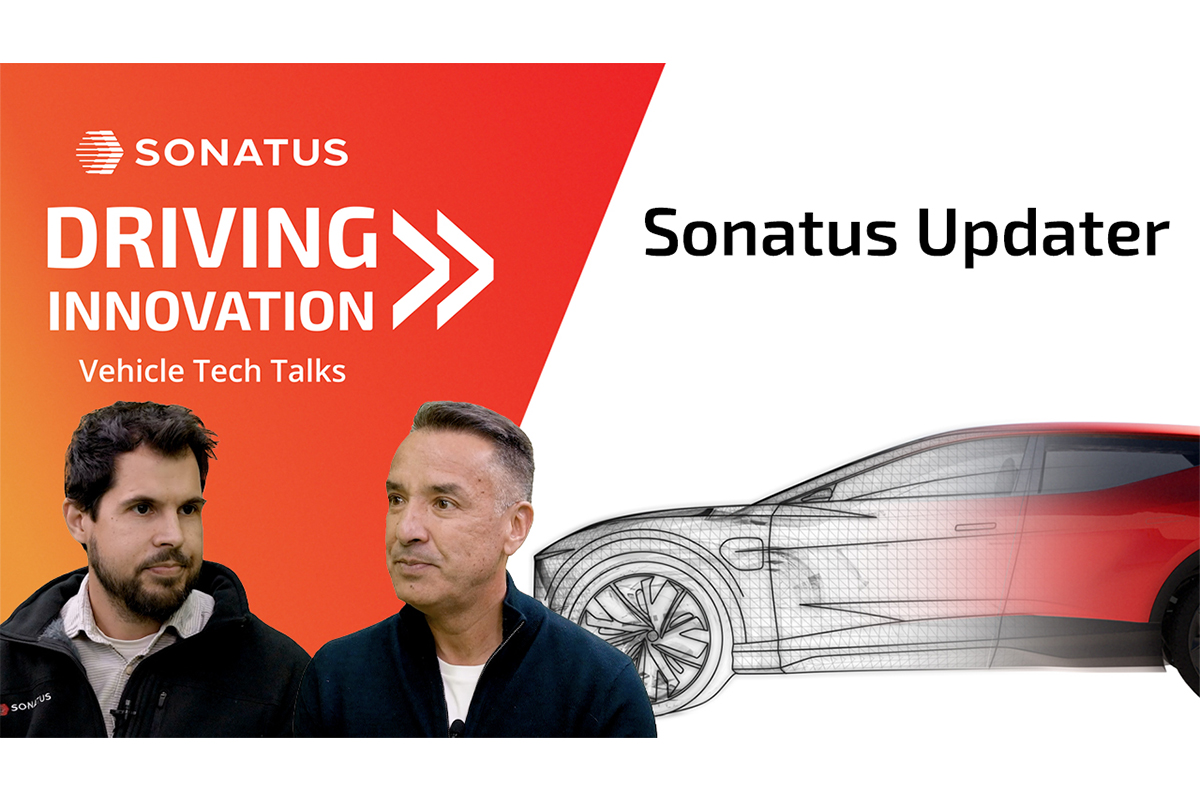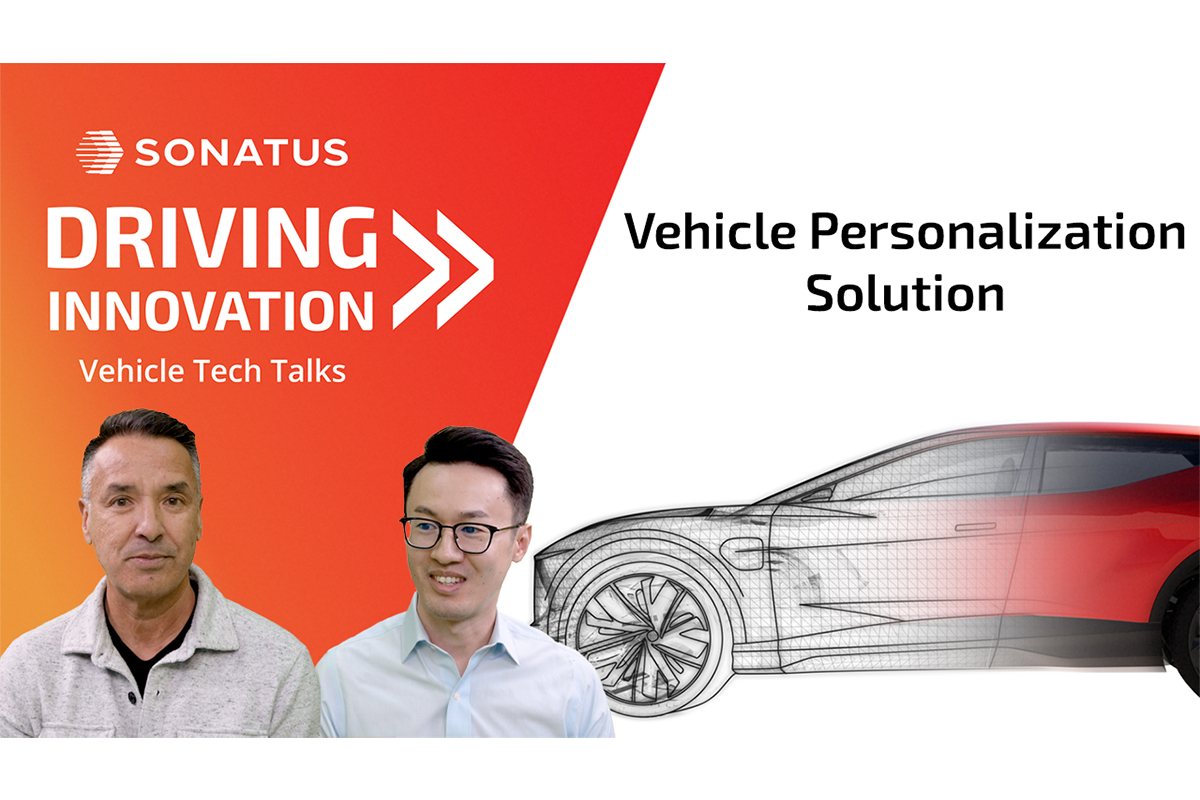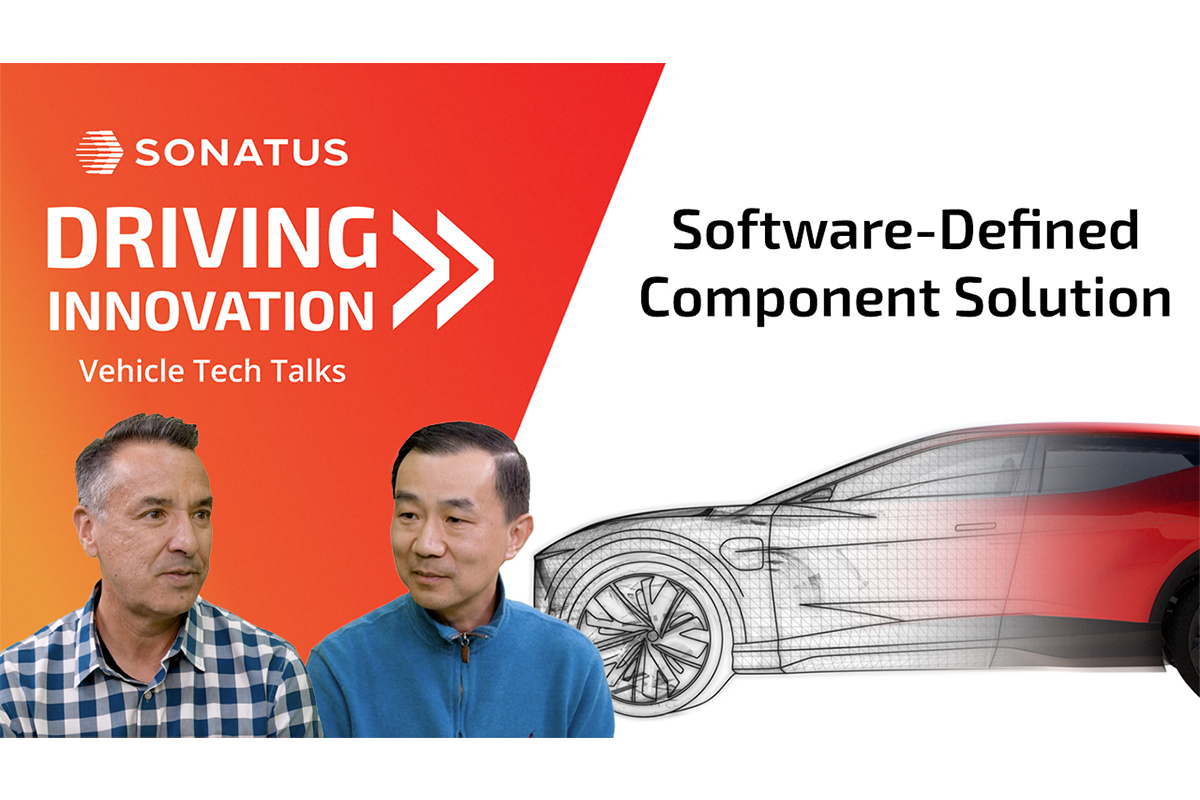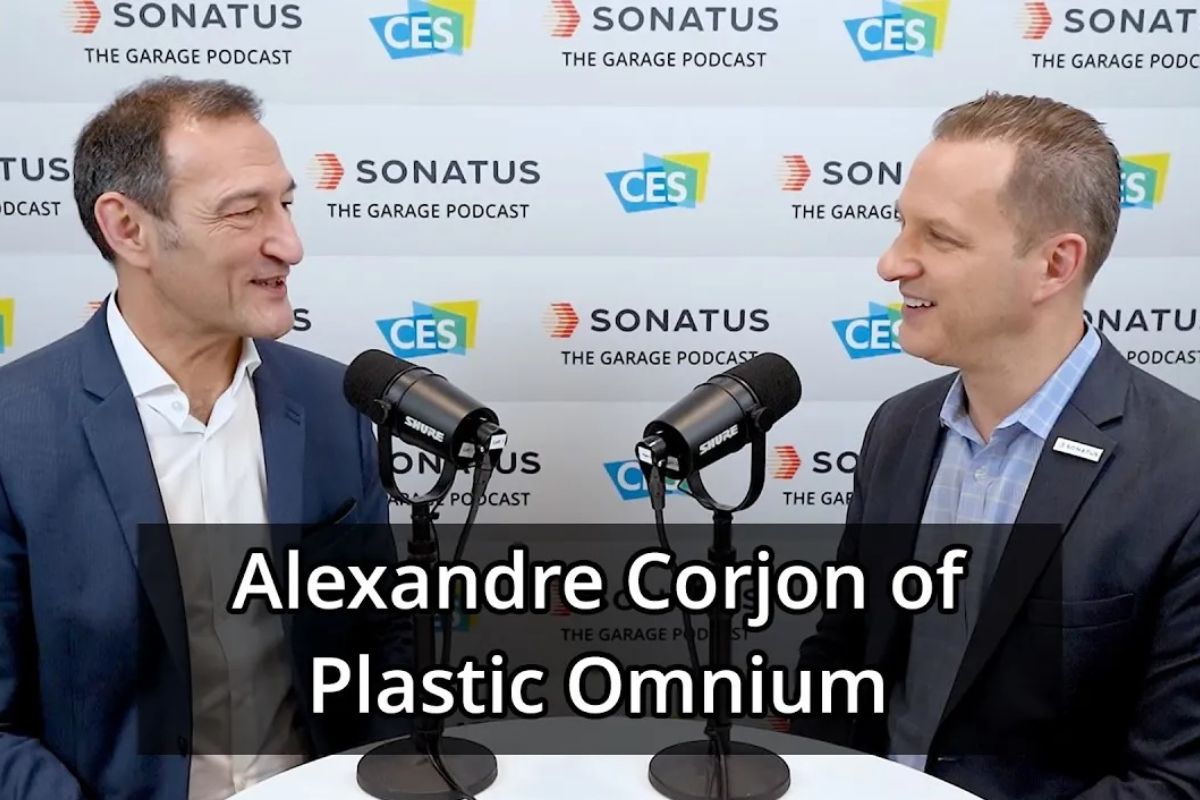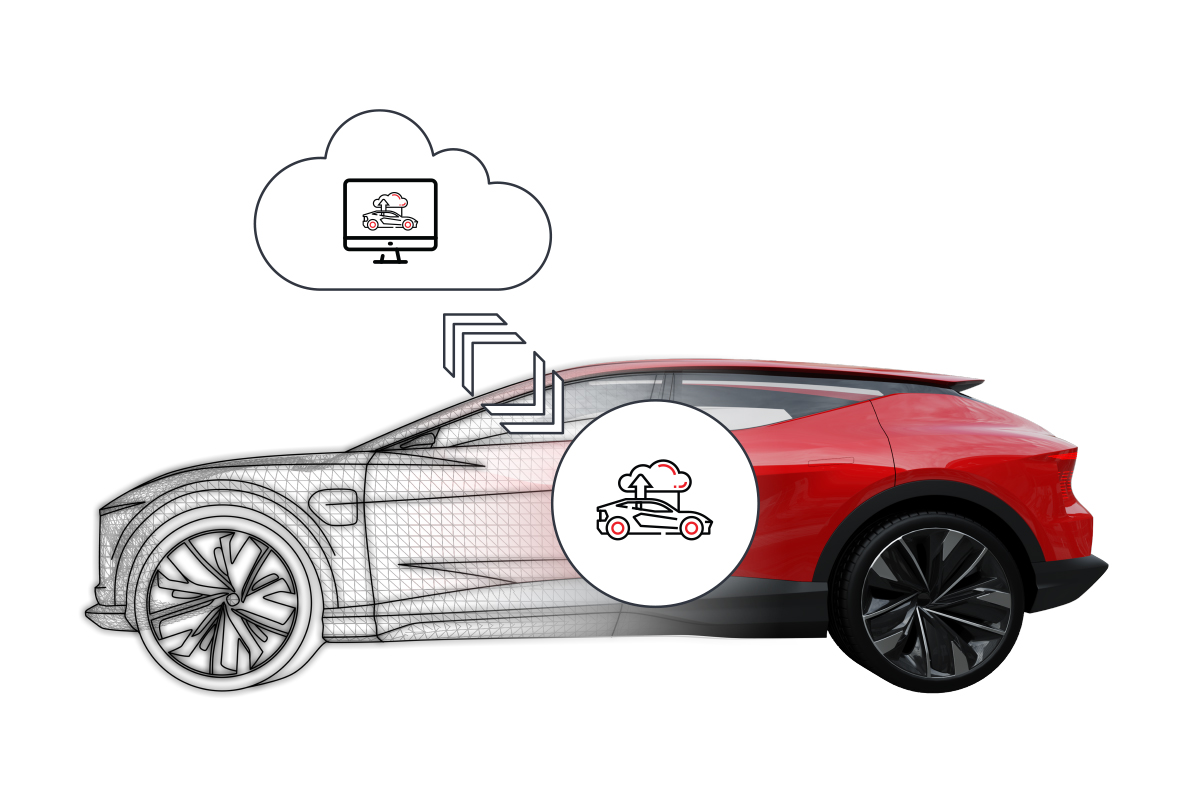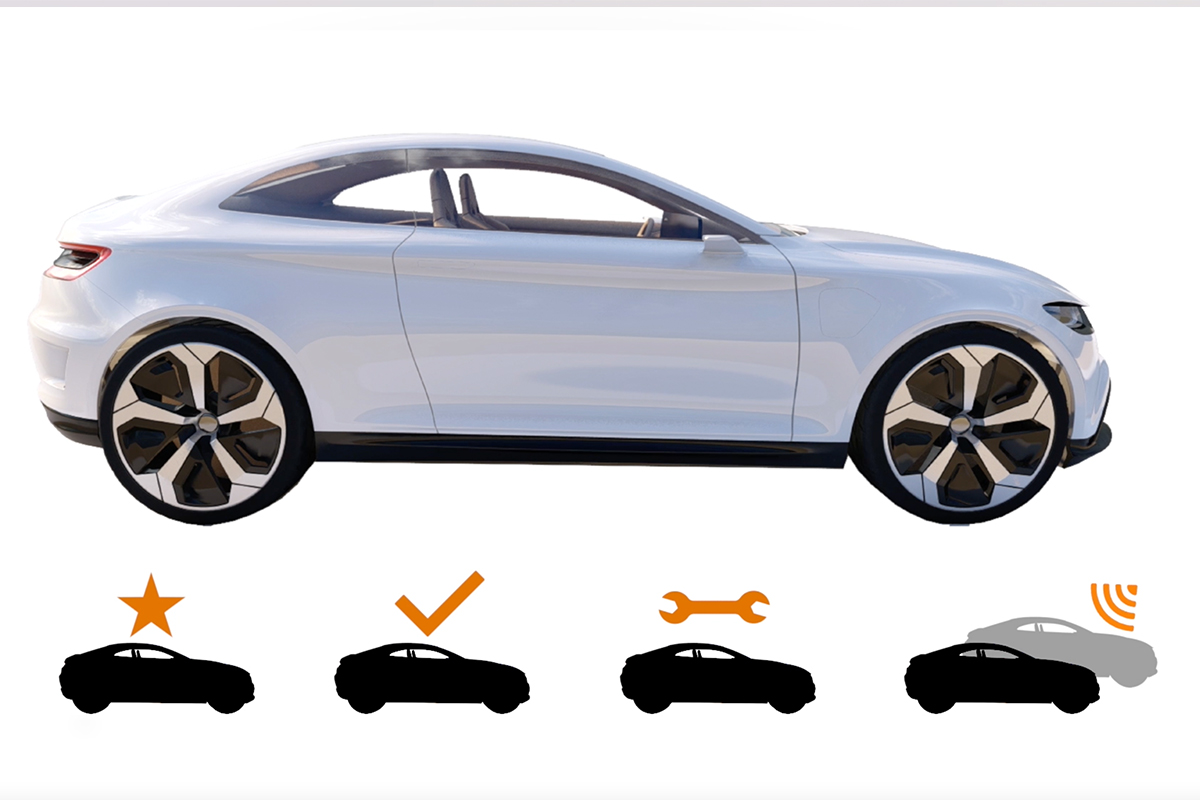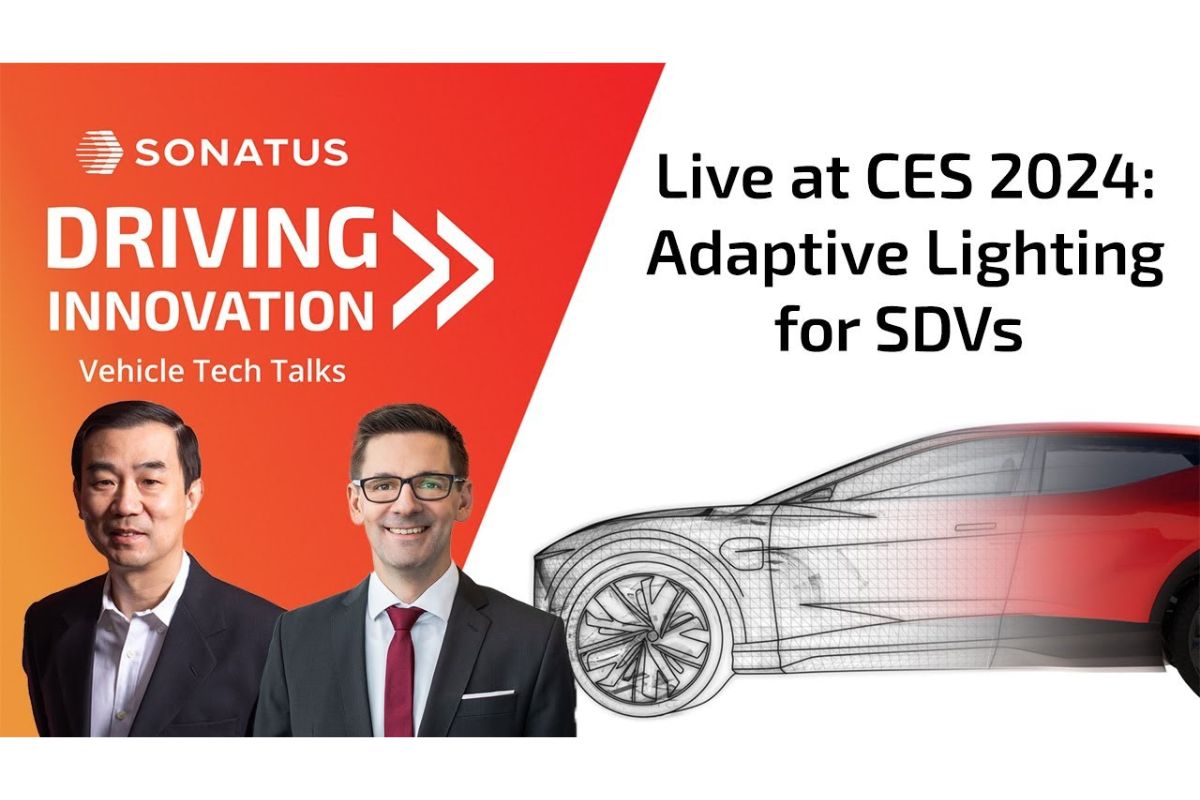Introduction
YU: Alright. Welcome to our Tech Talk. Today’s topic is “Adaptive Smart Lighting for Software-Defined Vehicles.” So we’re very excited about a collaboration with Plastic Omnium to bring this joint solution to the industry. So today, the lighting around the vehicles are mostly used for signaling. But we believe there are a lot of additional use cases that can be enabled by advanced lighting solutions from Plastic Omnium and smart software solutions from Sonatus to enable much better safety information, comfort, and attainment and personalization features to the future software-defined vehicles. And today, we are also showing a particular demo of a use case, using the rear display of the vehicle for different safety purposes, and in this particular demo, we are using the Automator product from Sonatus which allows the user to create features without developing any new software, and being able to do this dynamically, adaptively, and with minimal effort.
YU: So here is a very quick overview of the comprehensive set of products and solutions that Sonatus is offering to the OEMs to help them to build software-defined vehicles. And in this particular collaboration with Plastic Omnium, we are basically using our Automator solution. With that I like to welcome Michael from Plastic Omnium. He is the Director of Innovation in the Lighting Division. Michael, please.
Introduction from Michael Rosenauer
MICHAEL: Thank you very much for the introduction, and also thank you very much for the invitation to present Plastic Omnium to present our solution that we work together on. So, I wanted to give you in the next few slides in the next minutes a bit of an overview, who we are, what we are doing, how do we see the industry changing, and what is necessary to deliver to provide to the end consumer to provide to the end customer and to provide to our OEMs in order to succeed here. So Plastic Omnium drives a new generation of mobility. We are a world leader in innovative solutions for a unique mobility experience, and that is partially split in two parts. So the one is intelligent exterior systems, the first meter of the car, so lighting, plus modules, all brought together into one offer. And the other part is the powertrain part. So we are delivering from clean energy systems to e-power systems to new energies, hydrogen, we provide the complete solution range actually in terms of powertrain.
Complementing the Plastic Omnium Portfolio
MICHAEL: So what does that mean? How are we now complementing the Plastic Omnium portfolio with lighting? So typically, the portfolio consists of front faces, of tailgates, of rear faces, of bumpers, of intelligent parts already included modules and the first meter of the car, which includes also sensors. Now we’re adding lighting to that portion. So we are adding headlamps, we are adding lit grills, advanced lighting, advanced lighting functions, for front lighting and for rear lighting. We are also for rear lighting, covering the full range of technology for the ability of signal lighting, tail lamps, stop lamps. This is actually what we are showing together what can be done with it, and on top of that, we are also covering the space around the car, so we are using projection systems for the interior, for the exterior, to communicate with the surroundings to highlight and to create new stylings for the car.
Plastic Omnium Lighting Portfolio
MICHAEL: So what do we offer in terms of lighting portfolio? So we offer typically, the front and signal lighting portfolio from headlamps, from integrated light bars, coast to coast lamps, we are offering software solutions in terms of adaptive driving beams where we last year won the CES Innovation Award with our solution for advanced driving beams. We are covering the electronics hardware and software to offer for lighting, and we cover projection systems. On the one side dynamic projection which means we create animations, we create signal functions with projections around the car and in the interior and we are happy that we have one also this year a CES Innovation Award for our interior projection system, which is showcased also here at the CES. And the digital projection allows a full flexibility of adaptability of content generation that can be used for interior projection and also for exterior projection. And overall, the complete offer, what we are calling integrated offer means that as Plastic Omnium we are capable of offering this all to the OEM from the bumper from plastic parts from sensors plus lighting everything out of one hand.
Digitalization of Lighting and feature-on-demand
MICHAEL: So, what does this mean “digitalization of lighting” and this is actually why we are here and why we are wanting to show to you what we’re doing. So we see three main trends in going into digitalization, which on the one side is feature-on-demand. So you’re not buying a car and then you have fixed functions, fixed functionalities, fixed features: we want to unlock this potential, unlock these features according to the needs of the end consumer. This means for the European region this might be different to the to the APAC region or to the Americas region, we want to enable car-to-x communication. So that will in the use case to use the sensor suite, to use all the inputs that we’re gathering from the environment, translate this into functions for lighting. So in therefore, these plates are a good means to this end, to allow the traffic participants also to understand the actions of an autonomous driving car, for example. Then of course, we want to enable new user experience. So the driver is not buying a car for a certain point in time, but he’s keeping it of course for a long time. So that means he wants to have adaptable functions. So that’s why we also include new lighting styles which are in the end possible with this digitalization so that you don’t have one style over the whole lifetime, but different ones. These can be individualized either by the OEM, or this can be done by the end consumer depending what the OEM is, of course, enabling also the end consumer to do.
Superior safety through lighting
MICHAEL: It is very important for us we stand for safety and Plastic Omnium wants to increase this also. Lighting has always played a very important portion in safety whilst driving at night, but also whilst driving during the day and this can be used. So we have a highly adaptable lighting system with high definition resolution to create really the perfect illumination in front of the car, in front of the road for the driver without glaring, disturbing traffic participants, oncoming traffic, the car in front of you, but we also focus on saving energy with it. So we reduce it to the level that is necessary to fulfill legal requirements but really to save energy and not waste energy. We want to communicate and warn or give the opportunity to the OEM to do that. So to communicate and to warn the driver, other direct traffic participants as I say, and unlock these new features. For example, glare-free high beam is specified, defined and allowed in the US. So now what is necessary to do is unlock these features. So to build in the necessary hardware, but by software really adapting this and unlocking it. So digitalization for automotive lighting is essential. So we need really to bring this up to speed and I think we achieve this very well together in this collaboration. So to really revolutionize the vehicle design, to have the traditional features in, but to unlock also new features.
Re-inventing passenger cars
MICHAEL: So what does this mean together? We have built up now a showcase to really show a boosted mobility and also a reinvented passenger car. Here you see the mode, the setup, that we’ve done. A typical rear lamp, capable of all the necessary required functions of stop, tail, and turn signals with the optomechanics in, with the new technology of the perfect surface and planar surface light source OLED and also mini displays, completely capable of individualization to put in. Together with our internal software house at PO, and here we are grateful actually for our partner here, Sonatus, to enable also this opportunity to really connect all the data that we are getting to our actuators in the car, to our lights.
Rear lamps with mini-LED displays
MICHAEL: So a couple of words also on the module that we are bringing, so the rear lamp that we are bringing in. This is revolutionary. We have created a complete OLED real lamp, completely capable of all the functionality and the requirements that are necessary to fulfill in the ECE, so in Europe, but also on the SAE side, plus a display for communication. In the stop lamp, OLEDs consist of 187 individually addressable segments per panel, also with stop capabilities, with the 12-bit independent PWM dimming, so also here we are saving energy and we are adapting it to the environmental light conditions that we see. And also the turn indicator completely out of OLED, capable of being individually addressed and also create some individual styles. We have a mini LED display in. So two mini LED displays with over 3000 individually addressable LEDs, so really in red capable of being dimmed, capable of being adapted. So you will see this here at the Sonatus booth, you will see this at the Plastic Omnium ballroom, that this is really for all the use cases, a very, very good thing actually driving digitalization. We integrated everything into typical traditional rear lamp housing. So this is the lamp that you are seeing. And what you’re experiencing also then in this showcase will be individually addressable OLED panels plus the micro LED panels. With that I will hand it over to you again.
Sonatus Automator
YU: Thank you very much, Michael. That is very impressive. Alright. So I’ll talk a little bit about Sonatus Automator product. So this is a product that we brought to the market to help OEMs to be able to very quickly bring new functionality and features to their vehicle without the need of developing new software. And the way that they do it, is they use our cloud software, a very intuitive GUI interface to create the behavior that they want for their vehicle. And then once they define it, they can deploy it to the vehicle via a very lightweight policy, and then once the vehicle gets it, our Automator software inside the vehicle will be able to execute it in a way that is very safe. So the OEM can use this tool to continuously modify and enhance the behavior of their vehicle throughout the lifecycle of their vehicle. And this significantly reduces the cost for the OEM to make changes to their vehicle behavior, and also significantly accelerates the time to market for them to bring new features to their customers. Now, in particular with our collaboration with Plastic Omnium, so this is how the integration works. So inside the vehicle, we have a set of sensors all around the vehicles that’s generating all kinds of information that can be used by Sonatus Automator software to detect any kind of interesting events or situations. And then based on that, then the Automator software is able to drive different patterns on various lighting components all around the vehicle both inside and outside the vehicle, from Plastic Omnium. And what’s important here is Sonatus also provides cloud software, which can be used by OEM users, as well as suppliers to quickly configure new lighting behaviors for their vehicle. And in addition, the end user will also be able to have the capability to customize their own lightning experience for their vehicles.
Conclusion
YU: So we’re very excited about this collaboration and joint efforts with Plastic Omnium to bring a brighter future to software-defined vehicles. We believe that this new solution can make the whole lighting experience around the vehicle much more adaptive, dynamic and smart, and this will help bring a much better safety, comfort, and personalization experience to the end user. Thank you very much.
